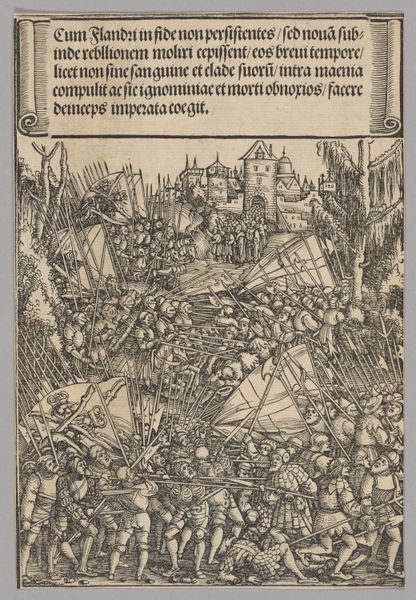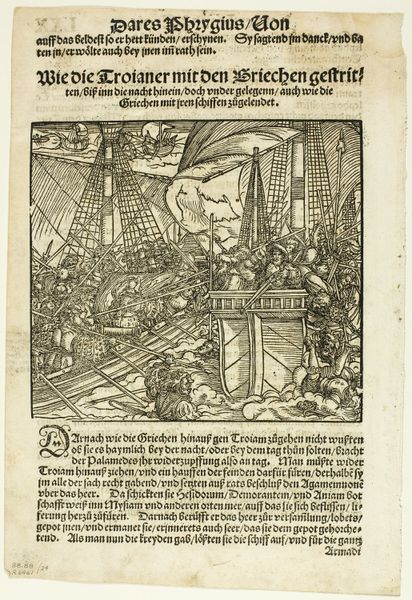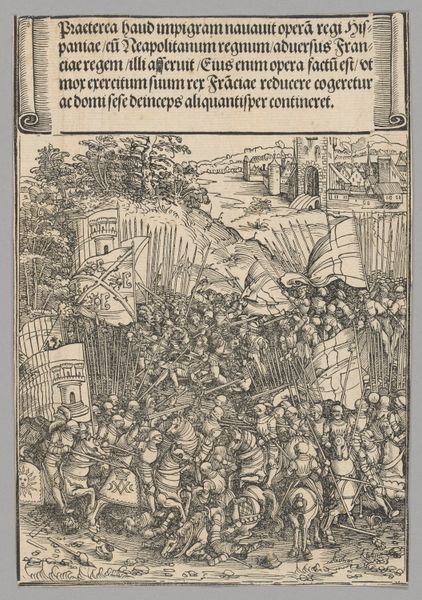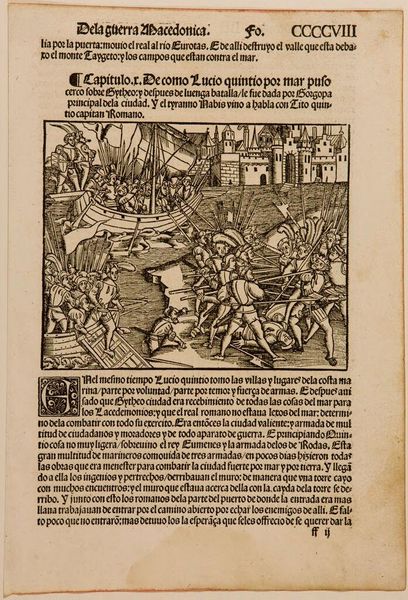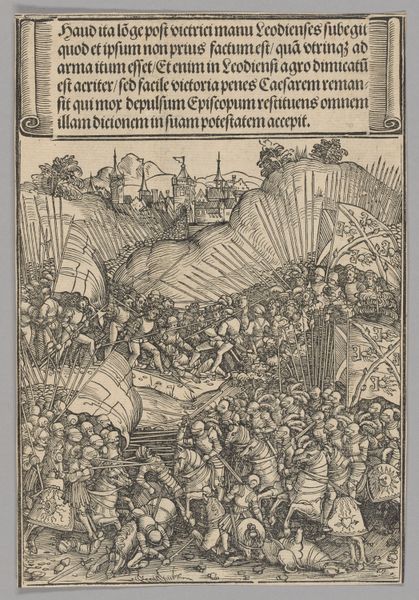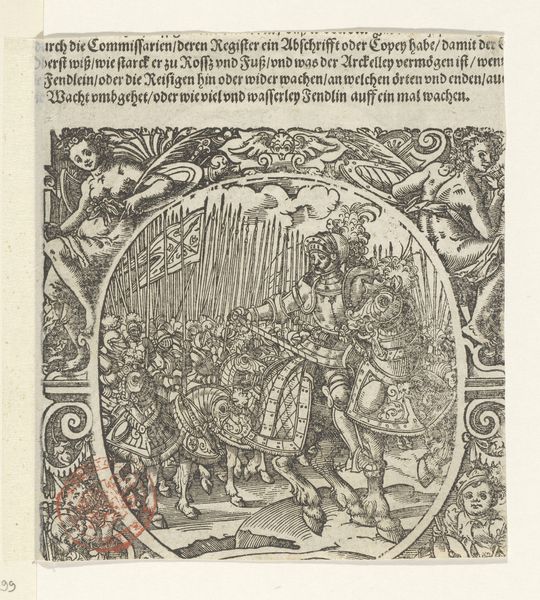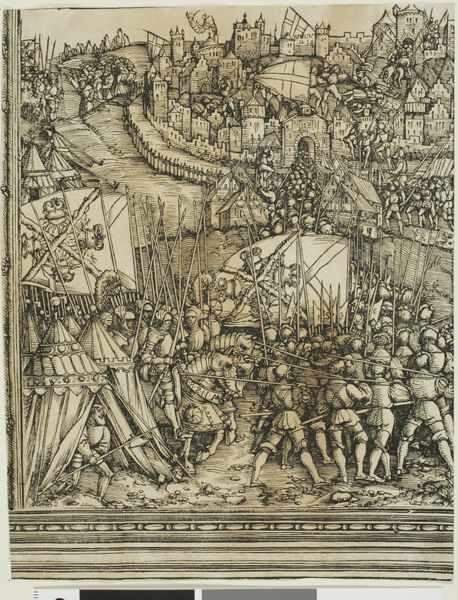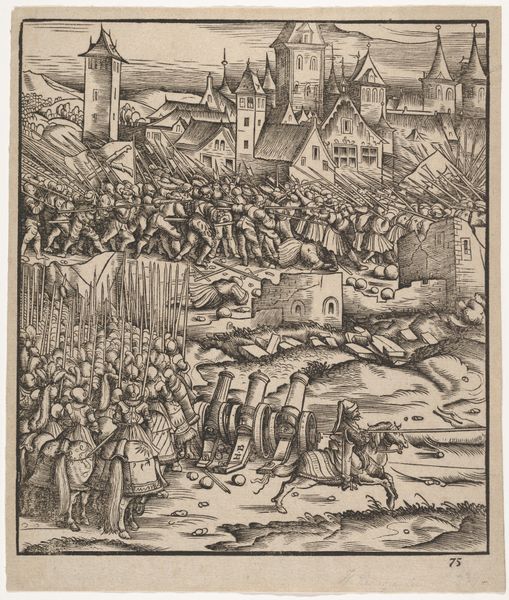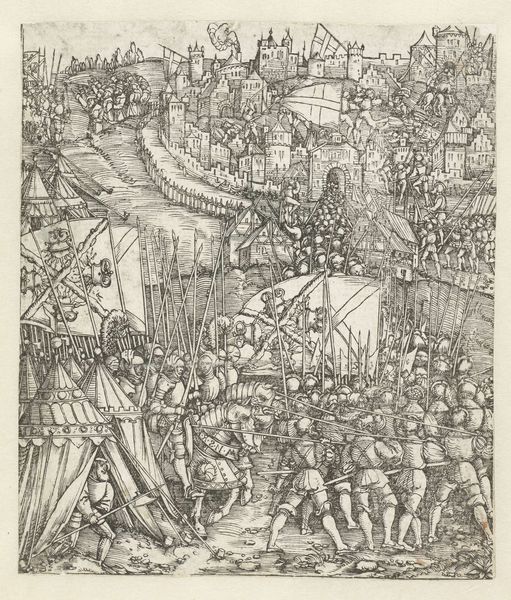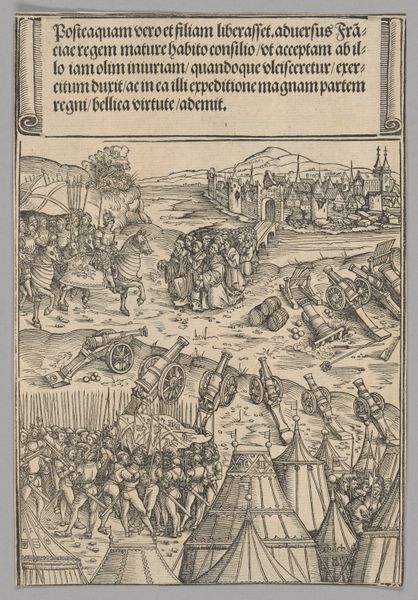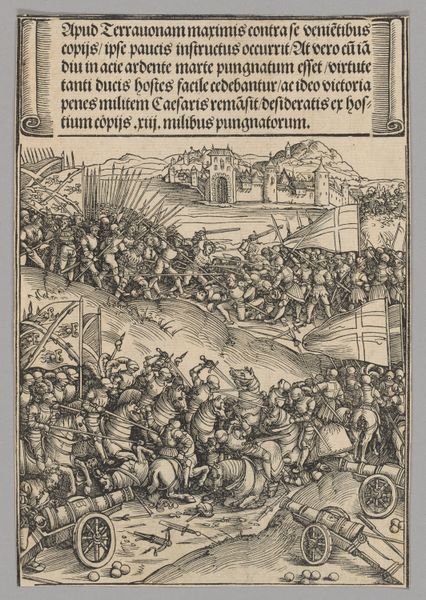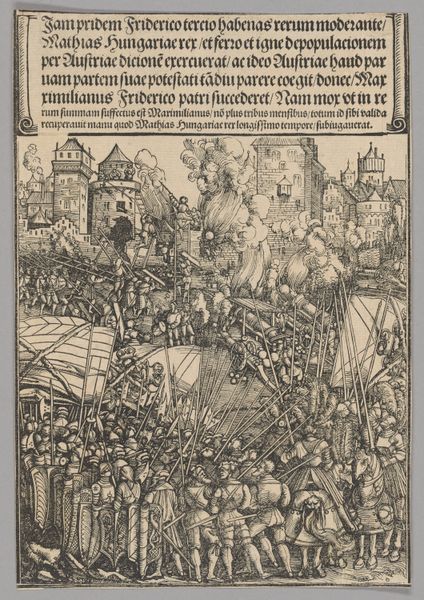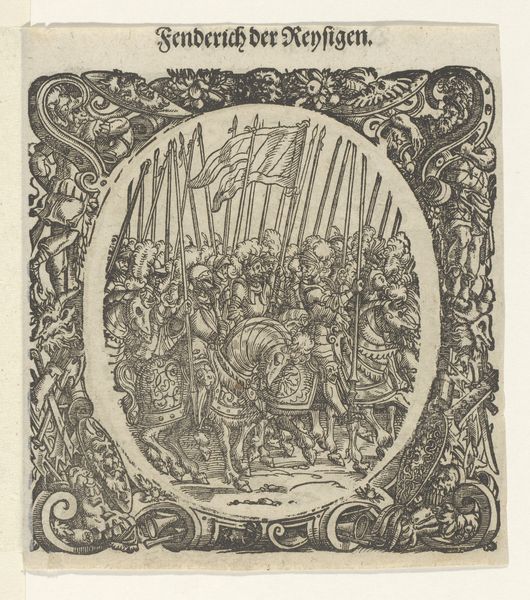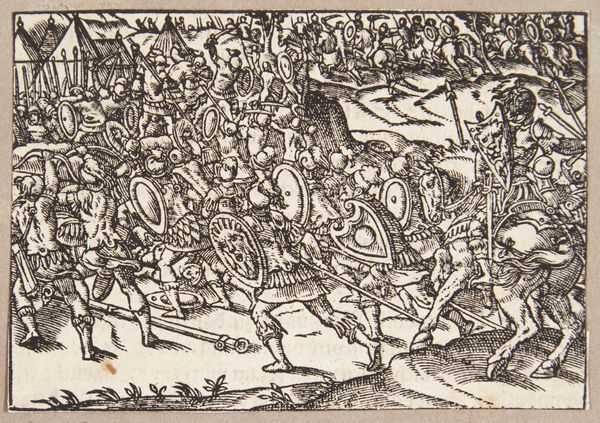
print, woodcut
#
medieval
#
narrative-art
# print
#
figuration
#
woodcut
#
line
#
history-painting
#
northern-renaissance
Dimensions: height 92 mm, width 63 mm
Copyright: Rijks Museum: Open Domain
Curator: Today, we're looking at a print called "Belegering," which translates to "The Siege." It’s a woodcut made in 1517, sometime during the Northern Renaissance. Editor: It strikes me as both incredibly detailed and almost frantic. All those figures jammed together, the spears creating this wall… there's an intense energy. It seems small in scale too. Curator: It is relatively small, which was common for prints at the time. The medium itself played a crucial role. The woodcut process, a relief printing technique, was more accessible and allowed for wider distribution of imagery during that era. It wasn’t just art; it was a way to disseminate information. Editor: Absolutely. Looking at the labor involved, it's remarkable. Someone meticulously carved away at that woodblock to leave only the lines that create this image. I'm really interested in the act of making, and how accessible this technique was compared to painting. Who made this and where were they from? Curator: We, unfortunately, don't know the artist. “Belegering” reflects the anxieties of the time; the Holy Roman Empire being in crisis. Figures like Martin Luther challenging traditional structures within the Church caused conflicts with prominent figures. This tension between the need for military and moral resolve encapsulates the cultural moment. Editor: So this image wasn't just about some battle; it was feeding into a larger debate. I'm still drawn to the formal aspects. The lines are so crisp and bold, considering the painstaking method, there's something immediate about the visual language. Curator: Line work was really popular. Many other prints employed dense, graphic depictions of war and military advances. And I agree. It emphasizes specific moments in larger sociopolitical structures—art becoming deeply integrated with these structures, which it is responding to here. Editor: It definitely highlights how even the seemingly simple act of producing an image becomes part of a much more complex web of production, circulation, and cultural meaning. Curator: Precisely. "Belegering" shows that artwork like this offered not only narratives but served as political tools. Editor: That makes the details all the more striking to consider today. Curator: Well, hopefully we have left you all with something to ponder as you go to the next work.
Comments
No comments
Be the first to comment and join the conversation on the ultimate creative platform.
